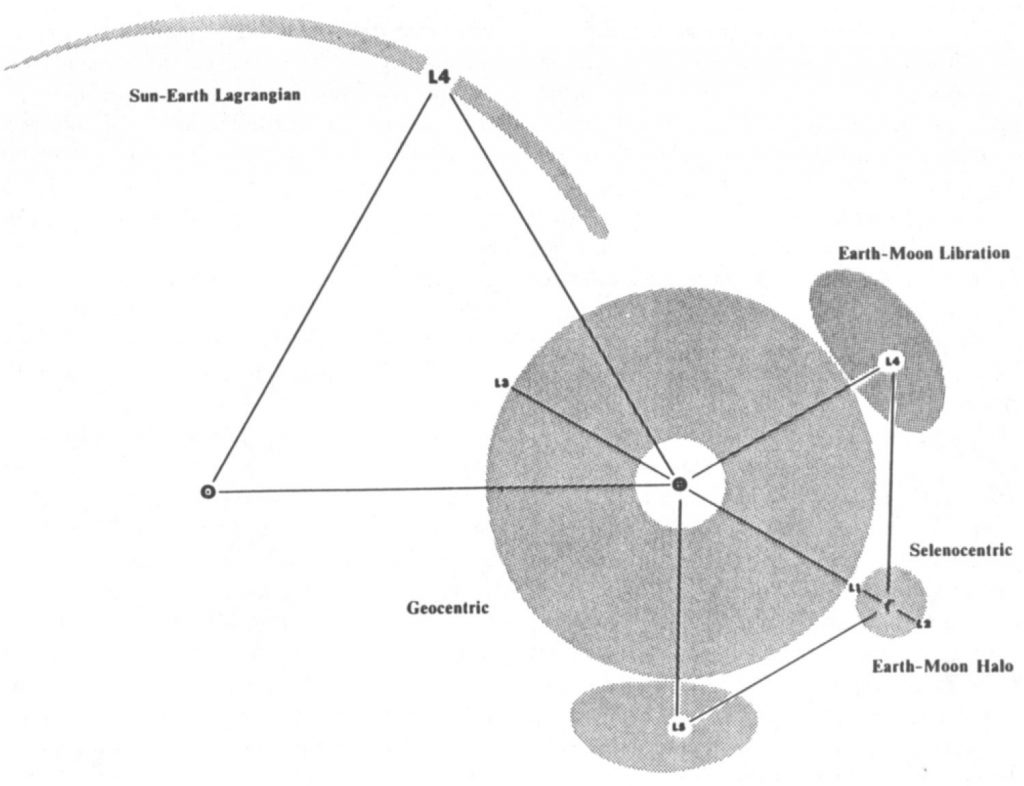The title may appear bizarre to most readers but, if one recently finished perusing a 1983 article by nanotechnologist Robert A. Freitas Jr., the answer would be simple: Extraterrestrials. Artifacts. Now. Solar System. Why not? Freitas Jr. attempts to build upon the legacy of Bracewell to unite fiction with science. This article itself can be viewed as but a small contribution Freitas Jr. to foment the idea of xenology, or the scientific study of imaginary extraterrestrial life. Freitas Jr. gives the reader three classes of extraterrestrial artifacts (ETA) to consider, each having the technology necessary to successfully complete its mission:
- objects intended to be found,
- objects intended to not be found, and
- objects for which detection by us is irrelevant or unimportant.
He argues that class I objects do not exist while class II objects are impossible to detect given our technological prowess. His paper emphasizes the possibility of class III objects existing within our Solar System, potentially near the Earth. Freitas Jr. postulates such an object would monitor “phenomena relevant to [its] mission”, which ostensibly wpuld be to study life on Earth. Such an object, while somehow having the technology necessary for interstellar travel, would not have the technology to (i) properly adapt to the terrestrial surface and environment or (ii) power itself without the Sun. Ergo, the best place for uninterrupted observations of life would be in a near-Earth orbit.
For some unexplained reason, the ETA would conduct “diffraction-limited optical” observations of the Earth which, for a near-lunear orbit, would suggest a size of ~3-30 meters. In order to survive catastrophic meteoric impacts, Freitas Jr. limits the size to >0.2-20 meters for a lifetime of on-order 1 million years in a near-Earth orbit. He posits the ETA would use the waterhole to communicate with its home, placing another constraint on size. When all constraints are considered, Freitas Jr. decides a ~1-10 meter object with an albedo comparable to an asteroid would be the limiting artifact we could fine. He goes on to posit regions near Earth that should be explored (see Figure 1) at visible, radio, and infrared wavelengths.

To this blogger, the ideas postulated by Freitas Jr. are fiction wrapped in physics. One should be wary of astrophysical programs proposed by an individual contemplating alien sex or emotions. If we assume an ETA can appear as an asteroid, then we should proceed with certain observations, such as the database of fast-moving asteroids with IRAS. However, contemplating an arguably biased set of objects and proposing how to observe said objects would be the height of folly for the scientific community. There are layers of assumptions that must hold true for the search for ETA (SETA) to be a viable program. Some of the requirements placed on ETA are arbitrary and appear only limited by the imagination. SETA, like most xenoarcheology, will only be successful in the realm of science fiction (i.e. Halo) until it can properly motivate its goals with science.
